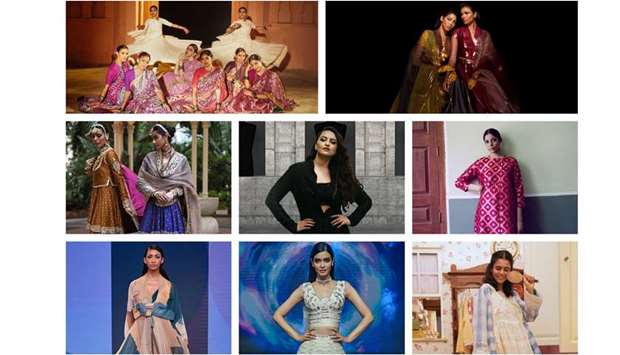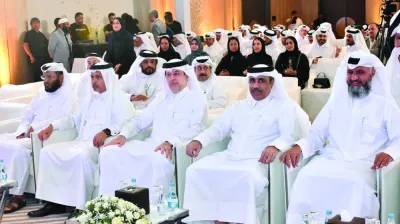The future of the fashion calendar has been uncertain for almost a year now. It’s been nine months since Covid-19 took over the world like a storm yet each day offers new challenges for designers and their teams to overcome amidst a health pandemic, an economic depression, and a global social justice movement. Planning for the next season is no longer a business as usual, but small steps are being made. The fashion industry at large, worldwide, has been reckoning itself at every level and business’s most visible touchpoint, the fashion week, has undergone a radical reformation of its own. Fashion weeks have gone digital. In the centre of all this, are the fashion councils and fashion week organisers because how the online content rolls out and who it reaches out to depends on them.
For people like myself, consistently working within fashion industry at home and abroad, attending fashion shows had been a norm before the coronavirus came along. We would wax lyrical about shows that we loved and collections that were so well constructed and others that never should’ve been made – but we would also whine about having too many events to attend – and that too a schedule of one show after another, one event after another, sometimes dates coinciding, overlapping, late late hours and the inevitable delays. While writing about gruesome collections is never fun, there is a certain high that I get when I talk and review clothes that are utterly beautiful, a show that is standout or a brilliant new designer who has all the makings of becoming the next big shot. It was only when live fashion shows came to an abrupt halt and the months yawned on that we began to miss them. But it’s the new reality of fashion industry, atleast for now: a digital-only fashion week – without the chaos, the buzz, the gossip that sieved out from the plethora of backstage dramatics, the models, the designers and even the hits and misses of the red carpet.
Lakmé Fashion Week (LFW) went digital this season, nobody knew what to expect from the first digital fashion week—other than that everything was going to be radically different from what we’re used to – but however, it succeeded on delivering a pleasing fashion experience. Zooming in on the fashion, in literal sense on our screens, here’s what we loved from Lakmé this season.
Manish Malhotra
He remains everyone’s best friend and they are there for him. Manish Malhotra is loved, cherished and there’s no way there’s Lakmé without his spot. For the previous few collections, Manish had taken a different route — that caterwauled more bling and glamour and less old-world charm, heritage and traditional wear. However, this very time Manish managed to balance out his love for bling with traditional bridal sense, which was a little overdue. Manish’s pieces featuring lehnga choli, dupattas and angrakhas meshed in cotton, silk, and velvets was an example of how to draw upon history and tradition and come up with heirloom pieces. Featuring chatta patti in contrasts popping colours, zardozi mixed with crystals, Mughal motifs in resham embroidery and Bollywood’s own Kartik Aryan wearing an ensemble nothing but a heavily worked piece. His pieces are not just for wearing but keeping and passing on to your next generation!
Gaurang Shah
Gauang’s ‘Taramati’ was all about the timeless classic that has passed through the history of subcontinent gracefully draping women, belong to all bands of Indian society: Sari. Be it women who faced the carnage that defined Indo-Pak Partition, or high society soirees or modern-day cocktail parties – the sari remains a staple in nearly every woman’s wardrobe — in jacquard, jamawar, fluid chiffon, slinky silk or crisp cotton. Ever reliable, the pairing of yards of fabric with a short blouse simply never goes out of fashion.
With its many folds and pleats, Gaurang retained the grandeur of a sari: employing chinkari, kasauti, block printing, embroideries, gota work, and hand-woven techniques on gorgeous banarasi, and jamdani weaves the thread embroideries were sometimes so detailed that they looked like print and a mélange of flora and fauna flitted about Gaurang’s canvas: clusters of flowers and asymmetrical shapes and designs. Woven in beige, green, yellow, rich purple, pinks, these are timeless pieces and you want to keep them for years over years in your wardrobe!
Raw Mango by Sanjay Garg:
One wonders what it must feel like to be the person behind a brand as ethnic as Raw Mango; to be accustomed to accolades and a perpetual stream of rave reviews. Does he still feel a high when applauded or is it now all in a day’s work for him? For while I have lauded this hoopla of talent to the skies before when he showcased his collection here in Doha during Shop Qatar last year, his festive collection ‘Moomal’ this season has me talking about it all over again.
As the name suggests, the ‘Moomal (love)’ was a throwback to his love for Rajasthani craftsmanship and traditional silhouettes. Minimalistic with popping colours, the collection featured multi-coloured long blouses, kurtas with choli cuts, graphically constructed cholis, typical Rajasthani necklines – exquisite hand-worked dupattas, the old-world voluminous gharara, resham worked onto dupatta borders… the whole shebang. As always, there was a riot of colors in the collection; the festive ghararas in just the right shades of pink and green; light yellows, peaches and then bolder royal purple and a shade of red … basically impeccably finished and so, so lovely
Pankaj and Nidhi:
Day 2 of Lakmé Fashion Week 2020, dubbed ‘Sustainability Day’ dedicated to highlighting designers that follow conscious and ethical practices in fashion. Far more coherent then anyone else on this day was Pankaj and Nidhi Ahuja’s ‘Talisman’, featuring the designers’ quintessential play of three-dimensional embellishments with fabrics made from 100 percent recycled plastic PET bottles paired with flowing chiffon and knits. It was playful and relaxed, yet daring and sporty with billowing shirts and lowers that allow for effortless slouchy elegance – bell bottoms, balloon-sleeved cropped blouse highlighted with sequins, puff-sleeved blousons, belted full-flared maxi, bralette with a long skirt, slim pants and button-less jacket – and hues that give the outfits an added breezy look against the predominant pastels.
Péro:
It was easily one of the best collections of the day. The collection was a symphony in cotton, gingham checks, linen stripes, and gauze-like solids falling in impeccably crafted layers, worked with intricate details that you immediately wanted to examine up-close. Printed flowers gave the ensembles a perfect chic appeal. Aneeth’s creative touches of handcrafted upcycled and hand embroidery was added to the footwear as well. There wasn’t too much of embroidery everywhere, which is an absolute delight because fastidiously crafted pleats and cuts fell into place perfectly not leaving an inch for anything extra. The huge sombreros worn by some of the models added flavour – you could almost see those layered skirts twirling on a hot night under the Spanish moon!
Amit Aggarwal:
Amit brought out nonchalant swirling lehngas, saris and separates evocative of festive yet unpremeditated and it was an utter breath of fresh air, swooping into luxury-wear’s fabric-infested landscape with cheeky colour blocks and the metallic Kanjeevaram sari border — mixed with polymer in interesting collages. The designer always presents something out of the box and one tends to associate this with him. His collection was inspired by cosmos and its stars, and well, it was extremely artisanal, the lineup was testimony to Amit’s finesse and eye for fashion. What a collection, Amit. Now, with this line, he even exemplified how has always meant to be for an industry that’s fickle – and he definitely plans to do so by sticking to his unique signature style rather than going down the hackneyed but lucrative embroidered route. What a relief.
Disha Patil:
Disha Patil’s ‘The Labyrinth’ held one transfixed; such was the sophistication of her craftsmanship, the finesse of her cut and the elegance of her silhouette. It was a beautiful collection, traversing a palette that varied from ivory, pastel pink, white and grey. One can more or less predict some of the elements that are bound to be a part of a Disha’s show: beadwork, paillettes and sequins, and hand embroideries galore. With ‘The Labyrinth’, Disha spun them together to introduce new silhouettes and also, creates looks that were strongly reminiscent of her earlier hits. Bridals are Disha’s forte and, in these times of generic heavy-duty wedding wear, she has a particular signature of her own. Her brides came resplendent in layered lehngas, the dupattas sometimes attached to the cholis or capes. The painstaking effort showed, as did the sophistication of Disha’s ethos.
Kunal Rawal:
Speaking of cool, it’s simply what Kunal will always be. The men wore the classic suits that Kunal cuts so well while the female models wore fierce jackets and skirts in grey and black. There was a lot of black on black sequin work, cutwork and silver beads. Even the models looked happy getting dressed for Kunal’s show. His menswear especially was replete with sharply cut jacket and embroidery. Having seen designers try to make menswear and blacktie fun for the audience rather than wearable for their clientele, this was the collection that delivered on all aspects. The jackets had filigree without compromising on the one thing that black tie is truly about: cuts. Sonakshi’s jacket, twinkling with silver embellishments, was an absolute statement — a sleek, modern take on traditional wear.

Lakmu00e9 Fashion Week (LFW) went digital this season, nobody knew what to expect from the first digital fashion weeku2014other than that everything was going to be radically different from what we’re used to u2013 but however it succeeded on delivering a pleasing fashion experience.



